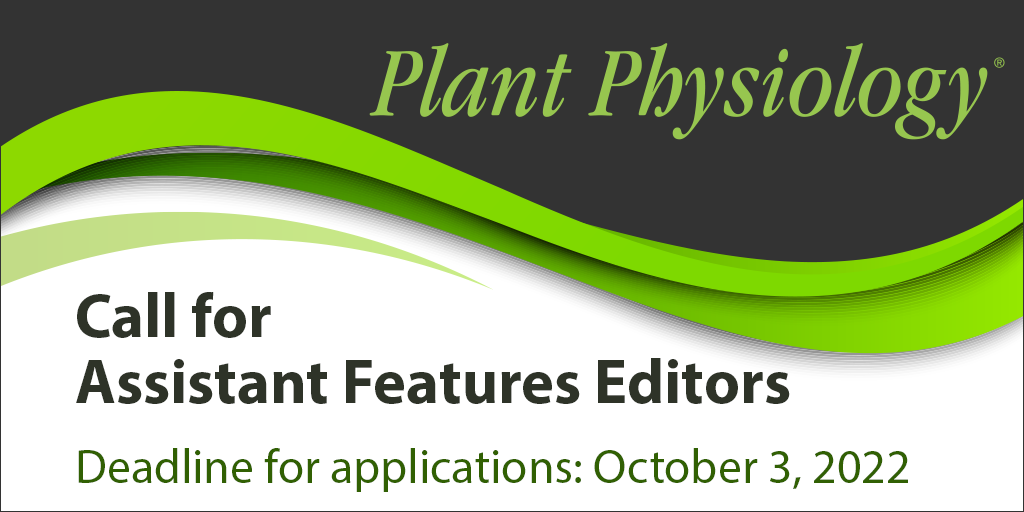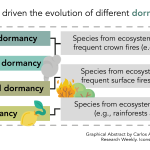Plant Physiology is recruiting Assistant Features Editors for 2023

By Yunde Zhao (Plant Physiology EIC) and Mary Williams (Plant Physiology Features Editor)
The mission of the Assistant Features Editor program is to help disseminate exciting discoveries published in Plant Physiology and to advance young scientists’ careers. This past January, Plant Physiology welcomed 13 new Assistant Features Editors to the editorial board. Together with Assistant Features Editors recruited in 2021, these young scientists have brought their passion for science to the journal, communicating to our readers some of the most exciting Plant Physiology papers through News and Views articles. Some examples of News and Views written by Assistant Features Editors can be found here https://academic.oup.com/plphys/issue#1359022-6554961 .
Our Assistant Features Editor program greatly advances young scientists’ careers. Plant Physiology Assistant Features Editors receive professional advice on scientific writing from our seasoned editors and the Assistant Features Editors have abundant opportunities to network with our regular editors. For example, Assistant Features Editors conduct informal interviews with Plant Physiology editorial board members, enabling the Assistant Features Editors and Plant Physiology readers to get to know our editors. An example of such an interview can be viewed here https://plantae.org/learning-from-the-experienced-editors-an-interview-of-the-plant-physiology-editor-in-chief-yunde-zhao-phd/. Assistant Features Editors are invited to the Plant Physiology editorial board meetings, with their travel expenses covered by the journal. At the editorial board meeting, the Assistant Features Editors not only can interact with and learn from senior scientists, but also contribute to discussions on journal policies and operation.
We are now recruiting a new cohort of Assistant Features Editors to join the Plant Physiology editorial board, replacing some of the current members who will step down from their roles with the journal at the end of 2022. This new cohort will work with the journal for 24 months beginning in January 2023.
If you are interested in becoming an Assistant Features Editor, we are welcoming applications through Monday, October 3, 2022.
We are interested in hearing about your current position and future goals and why you are interested in the position. We will need your Curriculum Vitae and the contact details of two individuals familiar with your work as a researcher. We will also expect two samples of your writing, one a first authored paper, and the other a sample News & Views commentary you write on your selection of one of the Plant Physiology articles listed below. We hope to have selected the new Assistant Features Editors late in November.
If would like to be considered for this program, please submit your application materials by October 3, 2022.
Send your application to [email protected] with Plant Physiology AFE application as the subject. These materials should include
- Cover letter
- CV
- First-authored paper
- Contact information for two referees
- Sample News and Views, on one of the papers listed below
- NOTE – Please email Mary Williams [email protected] if you have difficulty accessing the paper you would like to write about.
Please include a “News and Views” style article highlighting one of the papers listed below with your application materials.
Starch biosynthesis in guard cells has features of both autotrophic and heterotrophic tissues
Pleiotropic and nonredundant effects of an auxin importer in Setaria and maize
Gene co-expression reveals the modularity and integration of C4 and CAM in Portulaca
News and Views articles are intended to provide readers with a brief summary of the main findings of a recent research article, along with relevant and interesting background information and a brief commentary on why the findings are important. The text is limited to approx. 800-1000 words and a maximum of 10 references (including the highlighted paper). The News and Views articles may be accompanied by an image, for example a panel from an image in the paper or a diagram you prepare that summarized the key findings. You may wish to read examples of published News and Views articles to familiarize yourself with the style and format. Good examples can be found in any recent issue of the journal, e.g., https://academic.oup.com/plphys/issue/188/4.



